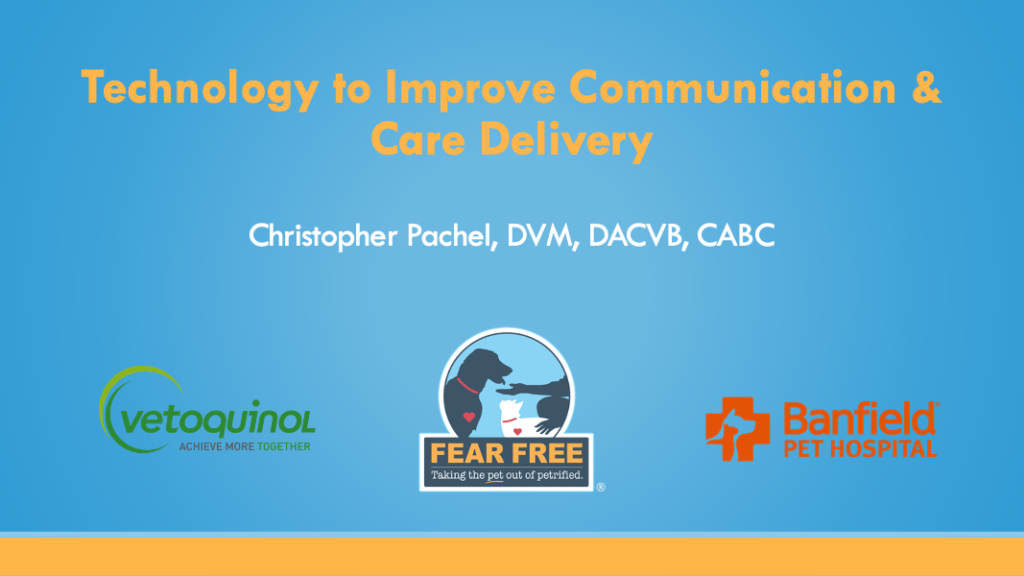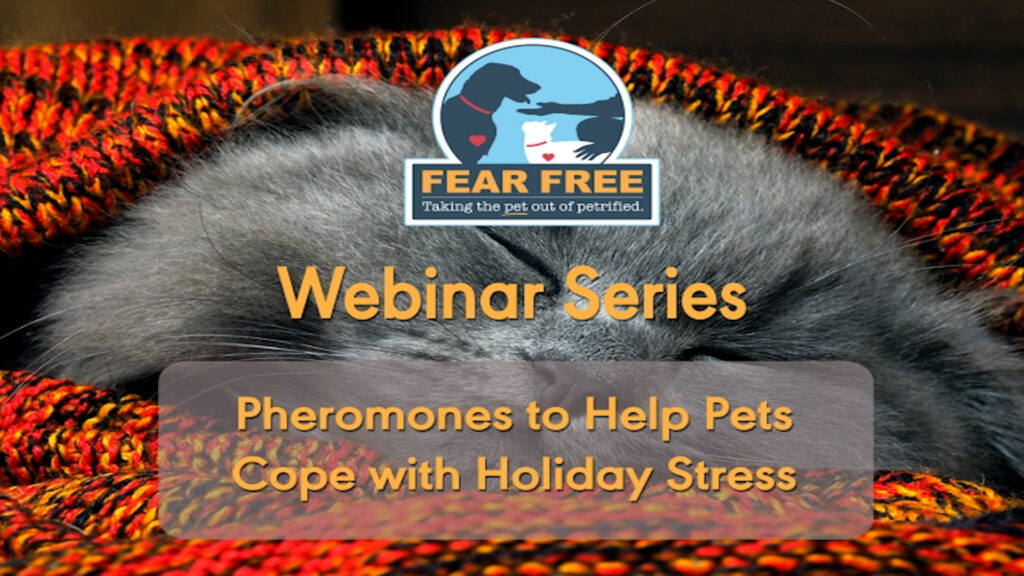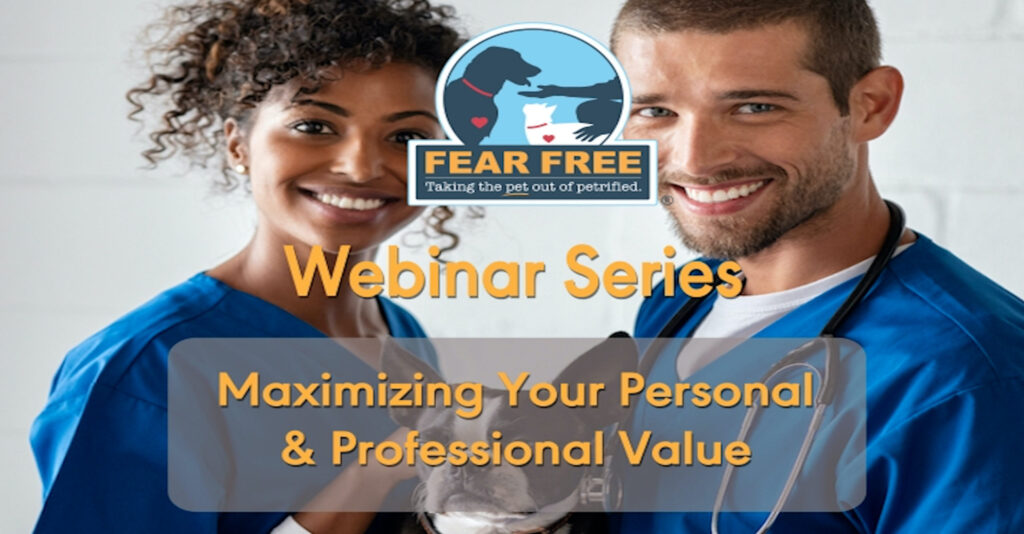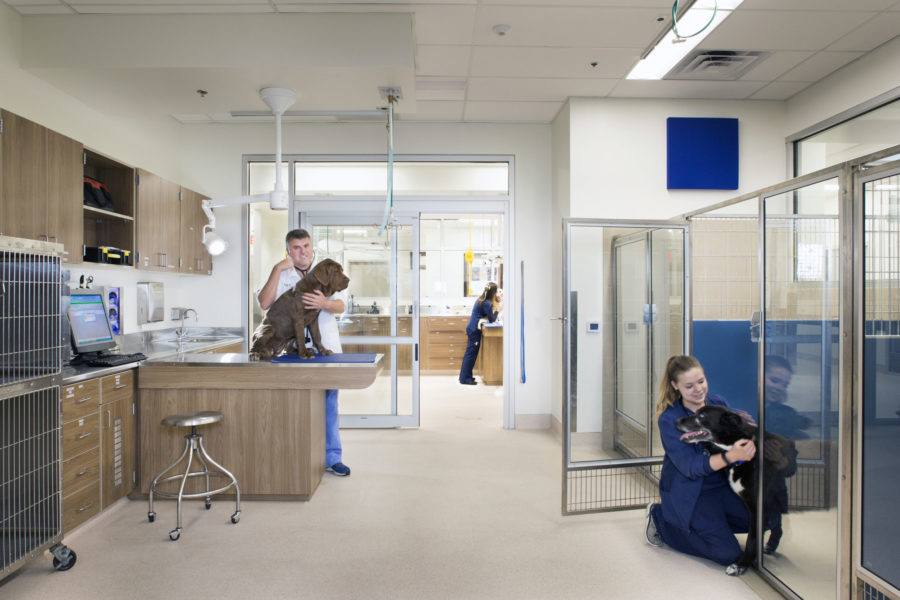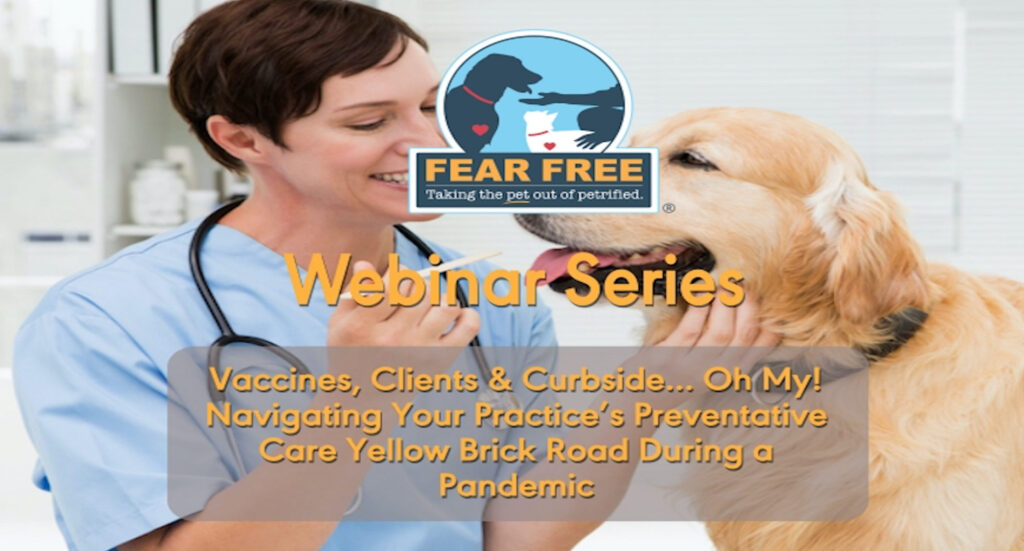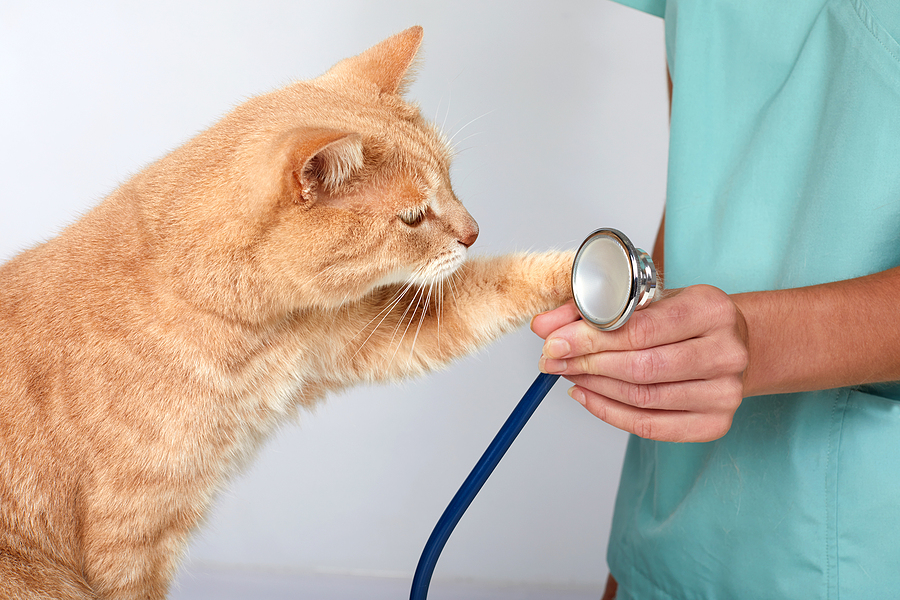Heather E. LewisMany veterinary practices have developed effective solutions for Fear Free exams and for low-stress patient housing. The next important area to tackle, the treatment room, is an inherently stressful space. Why are treatment rooms so stressful and what can we do to reimagine them?
Treatment rooms are stressful because they are generally designed to be a wide-open space, with many different functions occurring simultaneously. Treatment rooms are this way to ensure efficiency of staffing and safety for patients. For example, animals may be housed in treatment because this is the location where they can be monitored most easily. What if it were possible to maintain safety and efficiency, while de-stressing the treatment and other medical areas of your hospital? I know that it is! Below are a few of our favorite solutions for incorporating Fear Free design concepts throughout the medical areas of the hospital.
Separated Cat Treatment. One of the easiest ideas to implement is a separate cat treatment area located near cat exam rooms and ward. With this design, the cat areas of the hospital can function as a “mini clinic” space. This does not take a lot of room and removes cats from the chaos of the primary treatment space. Designs that include windows into the main treatment room allow for better communication between the cat area and other medical spaces.
Minor Treatment. This treatment space is located behind exam rooms and functions as a quiet area for simple procedures that might need more space or equipment than an exam room might offer. The client can step into this space as well. This minor treatment space is intentionally placed away from potentially frightening and unfamiliar sounds, smells, and activity associated with procedures and surgery. It can remain calmer and quieter because of its placement.
Treatment Curtains. Treatment curtains are borrowed from cubicle curtains used in human medical triage and emergency care. They allow for flexible visual privacy, and they also cut down on noise and visual stimuli, as we have learned anecdotally from using them. A curtain track can be placed in the ceiling around any treatment table to convert it into a semiprivate space.
Separate ICU and Recovery. Separating more critical patients behind glass in the treatment space does wonders. Even if you have few critical or recovering patients, separating them will help create a quieter treatment space and quieter patient space. If you like the idea of glassed wards for more critical patients, ensure that the glass goes to the floor so you can quickly glance in and monitor patients, to continue to keep them safe.
Better Materials and Systems. Once the design is reworked to make treatment areas more specialized, focus on the next layer of design: selecting better materials and systems. Here are a few of our favorite ideas:
- Dimmable lighting. Lighting that dims allows you to de-stress the space when things are quiet, such as overnight for hospitalized pets.
- Windows and daylight into treatment. Placing some outside daylight in the treatment room can make it feel more connected to the natural environment, helping to de-stress the space and make your staff feel a lot better.
- Indoor/Outdoor options. As the Covid-19 crisis has taught us, having some flexible outdoor space can be very helpful for a veterinary practice. What about having a treatment porch, or if that is too ambitious, what about at least having a few operable windows, or a beautiful garden for walking post-surgical patients?
- Noise control. Noise control is critical. Use good ceiling materials that cut down on noise. Use quiet casters on your chairs, and quiet latches on cages. Every bit of unnecessary noise is an opportunity to rethink design elements.
We have a long way to go with veterinary treatment spaces, but with Fear Free, we’re on our way to reimagining medical care that is far better for the emotional wellbeing of pets than it has been in the past. We are excited to see your ideas implemented in the treatment room of tomorrow, and we know that we will never look back.
This article was reviewed/edited by board-certified veterinary behaviorist Dr. Kenneth Martin and/or veterinary technician specialist in behavior Debbie Martin, LVT.
Heather E. Lewis, AIA, NCARB, is a principal of Animal Arts, an architectural firm that has exclusively designed animal care facilities, including veterinary hospitals and animal shelters, for more than three decades. She has worked on dozens of projects across the country, both large and small in her 19 years with the firm. Heather is a member of the Fear Free℠ Advisory Board and assisted in creating the Fear Free facility standards for veterinary hospitals. Heather is a regular contributor to various veterinary industry magazines. She has spoken on the design of facilities for the care of animals at dozens of national and regional conferences including Fetch Hospital Design Conferences, the UC Davis Low Stress Animal Handling Conference, and the Humane Society of the United States Animal Care Expo.
